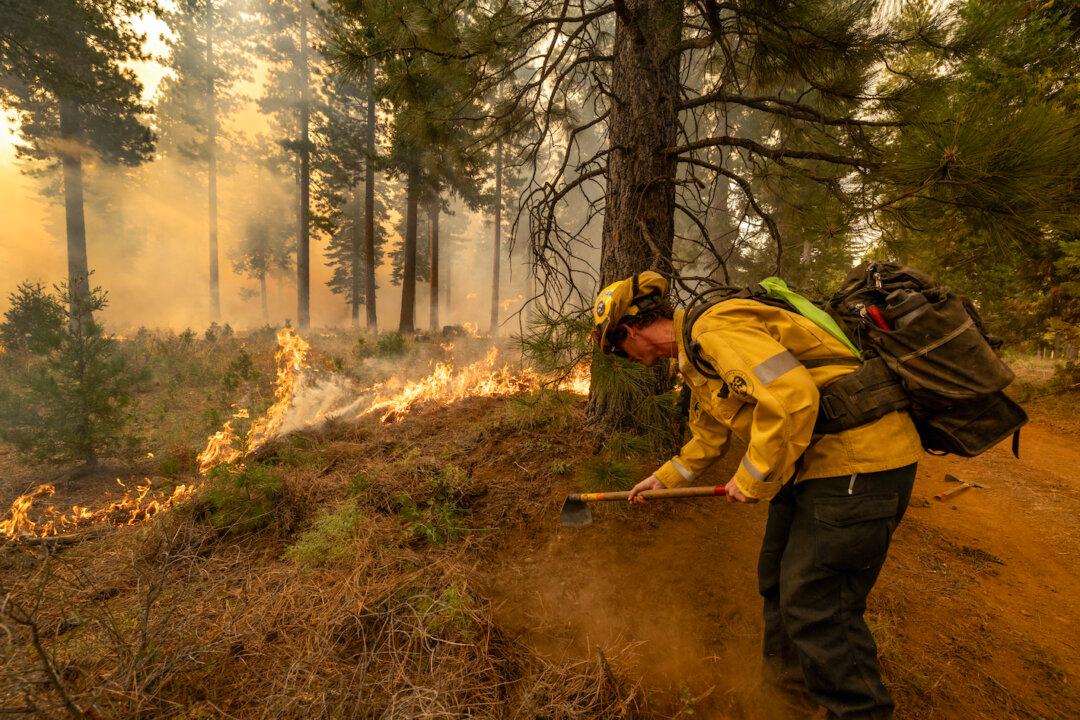Air tankers from throughout the state were flying over the Park fire Aug. 6 to help slow a rapidly burning section of California’s current largest fire near Lassen National Forest as temperatures in the region rose and humidity dropped.
“I ask each and every one of you to stay vigilant,” Incident Commander Chief Dusty Martin said during a press conference Monday afternoon. “This fire is still making a hard push to that east side.”





